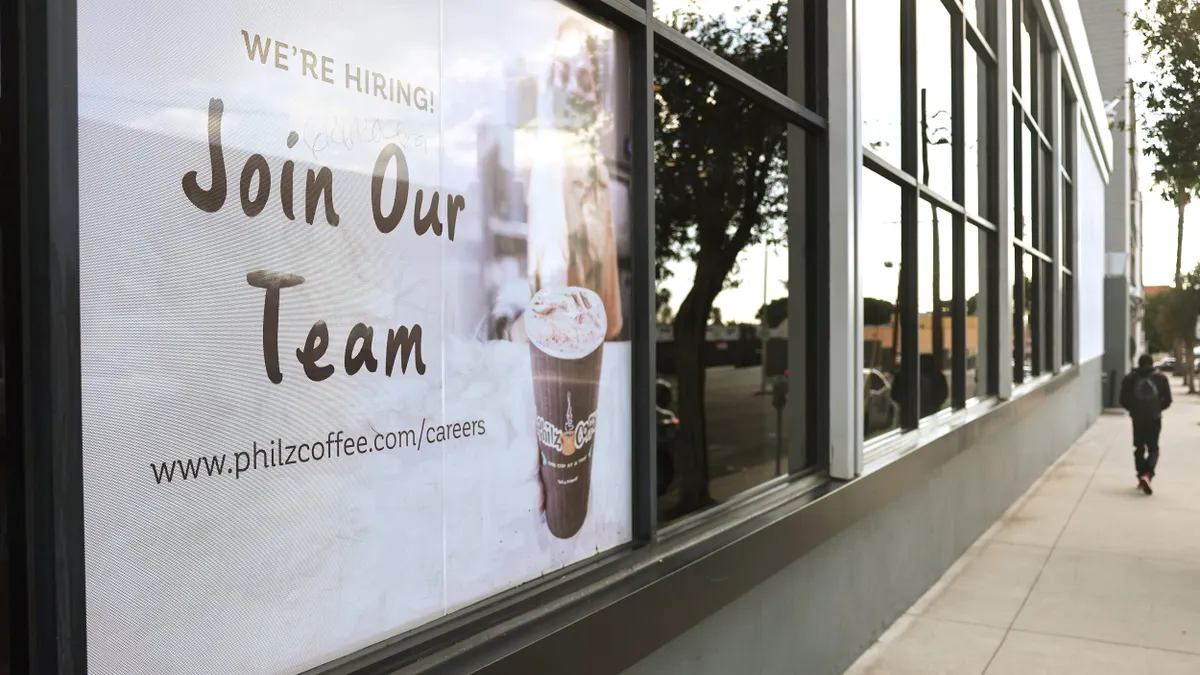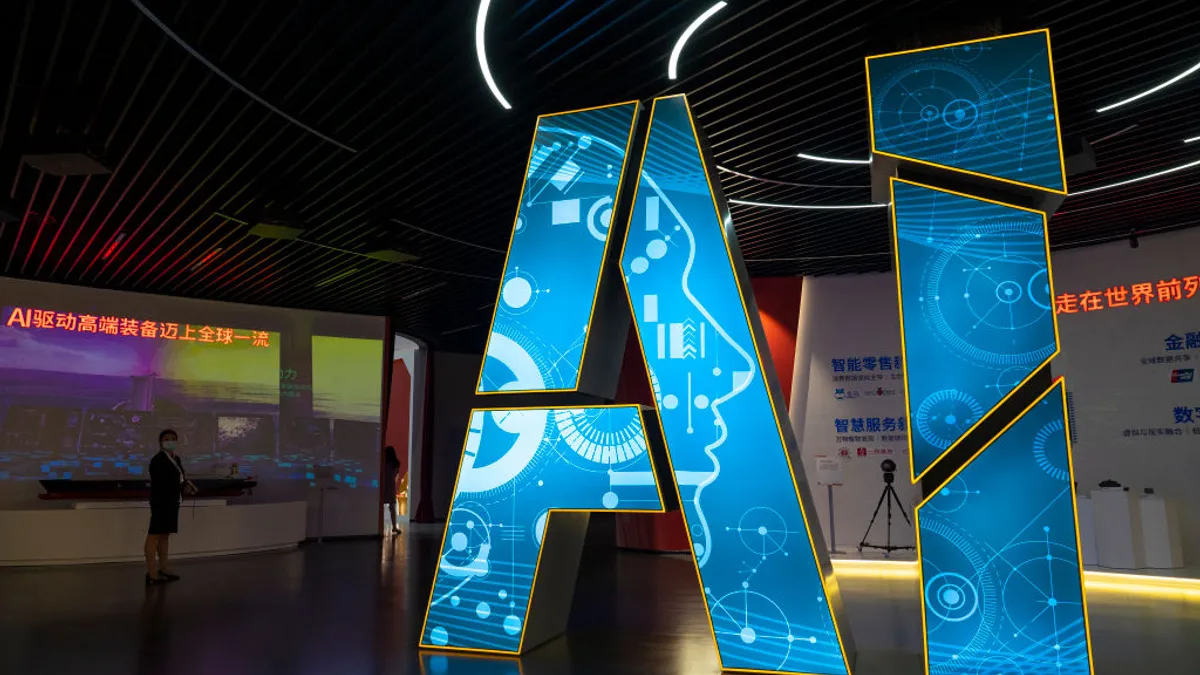Like most aspects of the HR profession, workplace culture was shattered by the pandemic. Years later, it is evident that HR teams are still trying to pick up the pieces.
Approximately 59% of respondents to HR Dive’s 2022 Identity of HR survey said that culture — an umbrella term for functions such as mentorship, engagement and team camaraderie — was among the biggest challenges their organizations faced due to COVID-19. Culture not only drew the highest share of respondents among all challenges listed, but it was also the only response selected by more than half of the 388 HR professionals surveyed.
That finding may not come as a surprise to HR teams tasked with maintaining a semblance of continuity in a world of rapid change. Among other things, the pandemic-forced movement of jobs and people away from offices requiring managers to adopt a new skill set if they want to succeed in delivering a consistent employee experience.
“Your readers are right to be concerned, because it’s not easy,” Lynne Oldham, chief people officer at fintech company Stash, told HR Dive in an interview.
Balancing flexibility and culture is particularly difficult for managers who are new to their roles and for longtime managers who have not previously worked with a remote team, Oldham said; “You really have to wrap your arms around these folks and give them extra attention.”
Oldham is a relatively new arrival to Stash herself, having previously served as chief people officer at Zoom. Her tenure coincided with a timeframe in which Zoom’s product became the platform du jure for remote work. Prior to her arrival at Stash, Oldham said the company had assembled a task force to create educational guides and timelines for managers of flexible workforces. In addition to the tips provided therein, Oldham conducted check-ins and surveys of managers to evaluate their progress.

There are specific lessons HR teams may impart upon managers to enhance their effectiveness in a hybrid or remote work set up. Reggie Willis, chief diversity officer at Ally Financial, said in an interview that his organization primarily emphasizes communication and, more specifically, managers being as transparent as possible with employees at every opportunity. As an extension of this, managers should listen to employees’ concerns while sharing their own without being inflammatory or disruptive, he noted.
“If you as a leader aren’t transparent enough to share your troubles or discomfort in a hybrid work environment, it becomes a little hollow when you’re trying to build a culture,” Willis said.
Similarly, Oldham noted the role of empathy in these conversations. Managers, she said, can identify where employees are struggling, while HR helps recognize where certain teams may be “hitting a wall” in terms of productivity. Adjacent guidance around everyday tasks like running inclusive meetings also may help.
The key of such practices is to ensure that employees know exactly what to expect from the manager, Oldham said. Employees, she added, “don’t leave companies — they leave managers,” making this piece of culture all the more pivotal.
Security amid uncertainty
Managers need to create an environment in which employees feel safe to share with their managers, Willis said. Ally has sought to do this in part by leveraging its employee resource groups and creating safe spaces for difficult workplace conversations, including those that speak on pressing social topics.
Psychological safety has emerged within the HR lexicon as a term to describe the type of work environment that encourages openness. Such cultures have to be built on trust, Willis said, and employees have to know and understand that an organization has their best interests at heart.
“If you as a leader aren’t transparent enough to share your troubles or discomfort in a hybrid work environment, it becomes a little hollow when you’re trying to build a culture.”

Reggie Willis
Chief Diversity Officer, Ally Financial
There are a number of things that help employees feel more secure within their organizations. In its 2022 mid-year Human Workplace Index, HCM platform Workhuman found that of 55% employees said having a good relationship with their boss or manager would help them feel secure, while 52% said the same of being recognized for their contributions.
“Recognition and appreciation make a difference,” said Meisha-ann Martin, senior director, people analytics and research at Workhuman. When employers focus on these items, “that serves to connect people together,” Martin added.
Managers also may evaluate whether psychological safety is built into existing practices. For example, it may be a good practice to hold weekly check-ins, but HR might want to hone in on whether managers are asking how their reports are doing, Martin said. She described this as hosting a “generous check-in,” one that conveys that managers care about employees beyond work.
Beyond the manager-employee relationship, HR teams can explore levers such as benefits strategy to positively impact culture. Willis said that Ally has sought benefits options that allow employees to be resilient in a turbulent economic and social climate. Access to meditation, therapy and other mental health resources are a few such examples.
“We’re doing a lot of things that, historically, weren’t expected of a company,” Willis said. “This whole blending of work and life [has] caused HR departments to think about how we can support people.”
The flexibility connection
HR Dive’s survey found that a majority of respondents across all organizational size categories offered either remote or hybrid work. Though flexibility has become a prominent aspect of many workplaces in 2022, it can burden HR teams with the task of determining the right balance between in-person and offsite time. Some commentators have questioned whether certain jobs will ever successfully be separated from the concept of the office.

For Willis and others, however, the office may be viewed as more of a resource or tool that enables an organization to get work done. Employers, Willis said, need to understand the influence of proximity on their cultures. Ally has identified “big buckets” of tasks and processes that could benefit from in-person gatherings or through asynchronous work, Willis said, but he noted that “I don’t know that we’ve found that silver bullet.”
Martin said that Workhuman’s research has shown that remote employees report the least connection to their colleagues and culture among the types of workers surveyed, but that these workers were also less likely to feel stressed or overworked compared to their on-site colleagues.
“It’s up to us to be really thoughtful about how we craft these experiences in order to maintain the advantages and avoid the disadvantages,” Martin added. “This is the time to be thoughtful about how people connect with each other.”
In-person connection does not need to solely focus on finding opportunities to bring teams together just to crank out more work, Oldham said. Rather, it can allow teams to relate and find commonalities with one another in ways that may not be possible in a virtual space.
An onboarding experience, rather than an arrival
Though respondents to HR Dive’s survey most frequently pointed to culture as a top challenge, hiring was not far behind; more than one-third of respondents said that hiring was their HR department’s highest priority today.
This finding may not be surprising given that the U.S. talent market remains ultra competitive, but hiring is deeply intertwined with culture, Oldham said. She noted that Stash has sought to improve its onboarding experience by focusing on cultural values such as putting workers in the shoes of the company’s clients so that it may better serve them.
“We need to reach people in their heart, not their heads,” Oldham said. “We need to do a better job of getting people to feel Stash and experience Stash, instead of just arriving at Stash.”
Many of the same frameworks that help managers connect with existing teams can also assist in integrating new team members, Oldham added. Stash has looked to team building activities such as group personality quizzes so that team members have a better understanding of their co-workers.
Willis said that Ally has been focusing on what the next generation of talent will look like, given that Generation Z contains a great deal of diversity. That has led the company’s HR team to double down on creating a psychologically safe environment that welcomes difference and understands the needs of different workers. At the same time, he noted that culture will have to meet new workers’ expectations around how work gets done.
“It’s not been easy,” Willis said of these expectations and their impact on culture. “As someone who considers himself a cultural ambassador and carrier, I still worry about the impact that is two years away.”
Employers will need to clearly and compellingly state what their employee value propositions are in an increasingly competitive market, Martin said; “It has to be about more than salary. What is the culture of your organization like, and how do you communicate that to people who are interested in joining?”
Martin said that question has been critical given Workhuman’s findings that new hires onboarded virtually during the pandemic struggled and were likely to return to their previous organizations. This, she added, may indicate the need for greater integration in and beyond the onboarding process.
Returning to the subject of recognition, Martin said employers can help new hires better understand organizational values by spotlighting instances in which new hires live out those values.
Correction: A previous version of this story incorrectly attributed the creation of Stash's flexible workforce managerial training task force to Oldham.





















